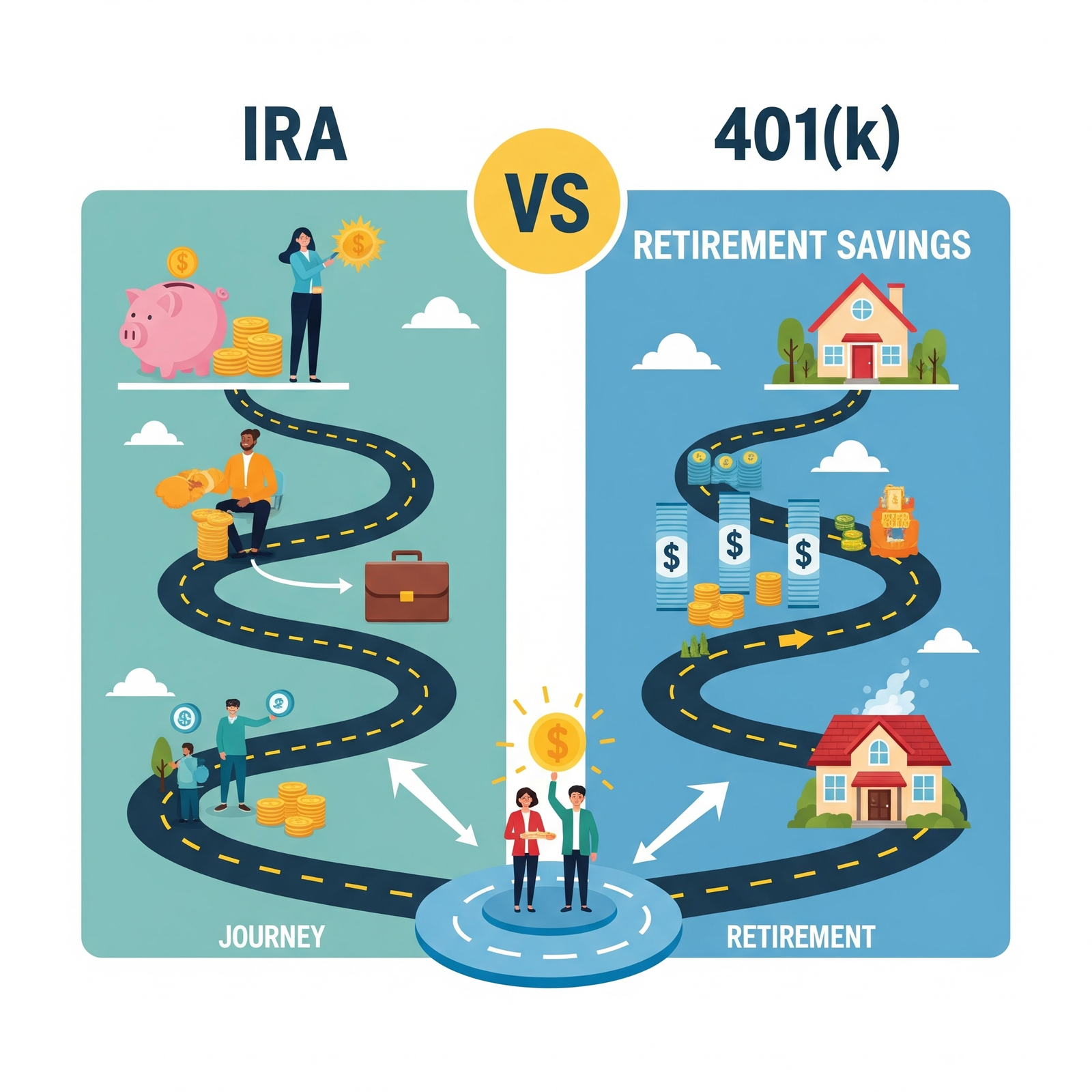Understanding IRA and 401(k) Retirement Plans
Planning for retirement is a critical step in financial independence. Individual Retirement Accounts (IRAs) and 401(k) plans are two of the most popular and effective tools for building a secure financial future. While both offer significant tax advantages and growth potential, they differ in their structure, contribution limits, and flexibility.
This comparison calculator helps you visualize how contributions to each type of account can grow over time, allowing you to make informed decisions tailored to your financial goals and employment situation.
 Visual representation of the distinct features and growth paths of IRA and 401(k) plans.
Visual representation of the distinct features and growth paths of IRA and 401(k) plans.
Individual Retirement Accounts (IRAs)
IRAs are personal retirement savings plans that you can open independently through banks, brokerage firms, or other financial institutions. They offer a wide range of investment options, including stocks, bonds, mutual funds, and Exchange-Traded Funds (ETFs).
- Traditional IRA: Contributions may be tax-deductible in the year they are made, which can lower your current taxable income. Earnings grow tax-deferred, and withdrawals in retirement are taxed as ordinary income.
- Roth IRA: Contributions are made with after-tax money, meaning they are not tax-deductible. However, qualified withdrawals in retirement are completely tax-free. This makes Roth IRAs particularly attractive if you expect to be in a higher tax bracket in retirement.
Annual contribution limits for IRAs are generally lower than for 401(k)s, but they offer greater control over your investment choices.
401(k) Retirement Plans
A 401(k) is an employer-sponsored retirement savings plan. Contributions are typically deducted directly from your paycheck before taxes (for traditional 401(k)s), reducing your current taxable income. A significant advantage of 401(k)s is the potential for employer matching contributions, which is essentially "free money" for your retirement.
- Traditional 401(k): Contributions are pre-tax, reducing your current income tax. Earnings grow tax-deferred, and withdrawals in retirement are taxed as ordinary income.
- Roth 401(k): Similar to a Roth IRA, contributions are made with after-tax money, and qualified withdrawals in retirement are tax-free. Not all employers offer a Roth 401(k) option.
401(k) plans generally have higher annual contribution limits than IRAs, making them powerful tools for maximizing retirement savings. However, investment options within a 401(k) plan are usually limited to a selection chosen by your employer.
Choosing the Right Retirement Account
The best retirement strategy often involves utilizing both an IRA and a 401(k) if available. Financial experts often recommend contributing enough to your 401(k) to receive the full employer match first, as this is an immediate 100% return on your investment. After that, consider maximizing your IRA contributions, especially a Roth IRA if you anticipate higher taxes in retirement. Finally, if you still have savings capacity, contribute more to your 401(k) up to the annual limit.
This calculator is a tool to help you visualize the potential outcomes of these choices, but for personalized advice, it is always recommended to consult with a financial advisor.